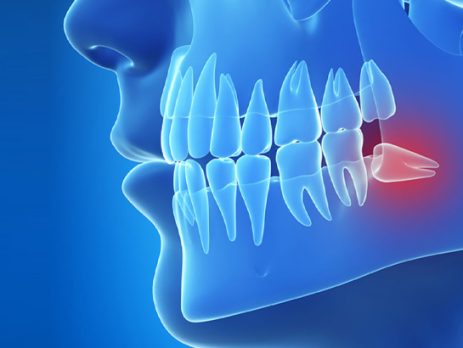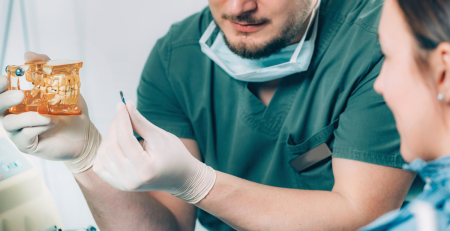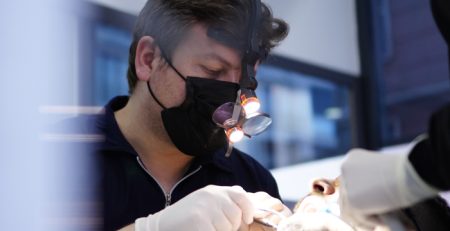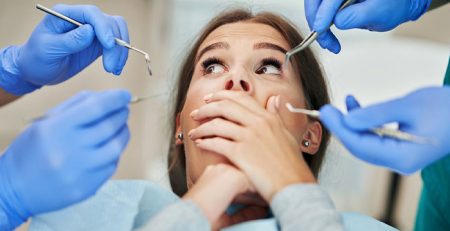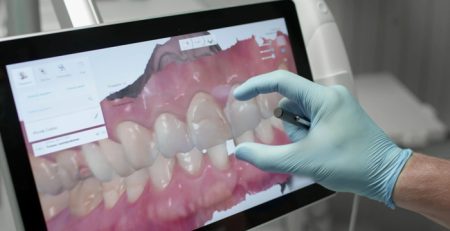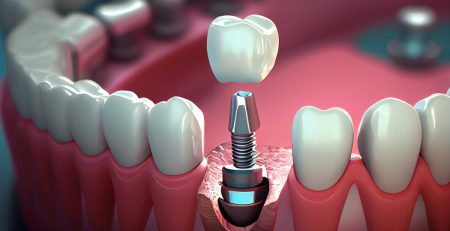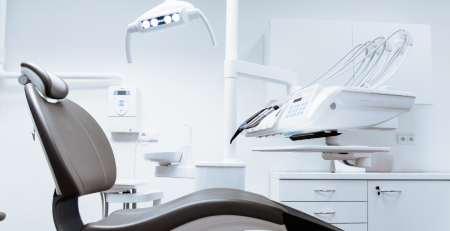Surgical Extraction of Impacted and Wisdom Teeth – Third Molar Extraction
Surgical Extraction of Impacted and Wisdom Teeth – Third Molar Extraction
Impacted and Wisdom Teeth Surgical Extraction
Wisdom teeth (also known as third molars) are the last large molars to emerge in the mouth. They typically appear between the ages of 17 and 25 and can cause problems for many people. Due to misalignment, improper jaw compatibility, or impaction, these teeth may need to be removed. Especially for impacted or partially erupted wisdom teeth, extraction is usually performed surgically.
What Are Wisdom Teeth?
Wisdom teeth are the third molars located at the back of the upper and lower jaws, totaling four. They appear in the final stage of tooth development and often cause problems due to lack of space in the mouth.
Common Issues:
Impacted tooth (completely under the gum)
Partially impacted tooth (partially erupted)
Tooth emerging crooked or sideways
Pressure on neighboring teeth
Formation of cysts or infections
Why Is Surgical Extraction Necessary?
Not every wisdom tooth requires surgical extraction. However, in the following cases, surgical intervention may be needed:
Impacted Teeth: If the tooth remains within the jawbone, it cannot be removed by conventional methods.
Cysts or Infections: Inflammation, abscess, or cyst formation around the impacted tooth.
Risk of Damaging Neighboring Teeth: If the wisdom tooth threatens to damage other teeth or cause misalignment.
Orthodontic Reasons: Adjustments may be necessary before orthodontic treatment.
Pain and Jaw Locking: If pressure from the tooth affects the jaw joint.
Preparation Before Surgical Extraction
Before surgical extraction, a detailed examination is conducted by a dentist or oral and maxillofacial surgeon.
Preparation Steps:
Panoramic X-Ray: Determines the position of the tooth, its proximity to nerves, and its location in the jaw.
Medical History: Assesses use of blood thinners, chronic illnesses, and allergies.
Antibiotic Use: In some cases, antibiotics may be prescribed pre-op to prevent infection.
How Is Surgical Extraction Performed?
Surgical extraction of a wisdom tooth is performed under local anesthesia. In some cases, sedation or general anesthesia may be preferred (especially if multiple teeth will be removed at once).
Surgical Steps:
Administration of Anesthesia: The area is fully numbed.
Incision of Gum Tissue: The area over the tooth is opened, and bone may be removed if necessary.
Sectioning the Tooth: If the tooth is large or has spread roots, it is divided into smaller pieces.
Tooth Extraction: Once fully removed, the site is cleaned.
Suturing: The area is closed with stitches.
Gauze Application: A sterile gauze pad is applied to stop bleeding.
The procedure generally takes 30–60 minutes.
Postoperative Recovery Process
The healing process varies by individual but typically takes 1–2 weeks. Mild pain, swelling, and bleeding may occur in the first few days.
Important Guidelines:
First 24 Hours: Avoid hot food and drinks, do not spit or use straws.
Cold Compress: Applying an ice pack to the cheek reduces swelling.
Painkillers: Take the prescribed medication regularly.
Oral Hygiene: Brush carefully and avoid the wound area.
Soft Foods: Choose soft and cool foods like soup, yogurt, and puree.
Avoid Smoking and Alcohol: Stay away for at least 72 hours, as they delay healing significantly.
Possible Complications
Surgical extraction is generally safe, but rarely, complications can occur:
Alveolitis (Dry Socket): A painful condition resulting from the loss of the blood clot.
Infection: May occur due to poor cleaning or immune issues.
Nerve Damage: Especially if the tooth is close to the lower jaw nerve; may cause temporary or rarely permanent numbness.
Bleeding: Normal for the first few hours, but prolonged bleeding may require intervention.
Follow-Up After Surgical Extraction
Stitches are usually removed after 7 days.
The dentist will check the healing progress.
If complications have developed, further treatment may be planned.
Surgical removal of wisdom teeth is important for maintaining a healthy oral structure and preventing serious issues in the future. This procedure can be safely performed by experienced dentists or oral surgeons. With proper care and adherence to medical advice, the healing process can be completed quickly and smoothly.

